or start from open source methods. Learn more about OneLab softwareUse OneLab
NucleoSpin RNA/RNA Plus

This basic method provides the core methodology for translating a workflow into OneLab-executable script(s) as an attempt to fully or semi-automate a specific procedure. It demonstrates the benefits of automation and highlights OneLab capabilities and best practices to promote solution adoption, helping transition from manual to a more automated approach. It can be used alone or serves as a building block for a more complex workflow and is easily adaptable to users' requirements.
Overview
NucleoSpin RNA ─ Includes DNase I
NucleoSpin RNA uses a simple spin-column procedure (Figure 1). First, cells are lysed in a buffer that inactivates RNases (which are present in virtually any biological material) and creates appropriate conditions for RNA to bind to the silica membrane. After lysis, homogenization and reduction of viscosity are achieved by filtration with a NucleoSpin Filter unit (shredder, column with red ring), which is provided with the kit. Residual genomic DNA is removed by on-column digestion with rDNase (column with light blue rings), which is also included in the kit.
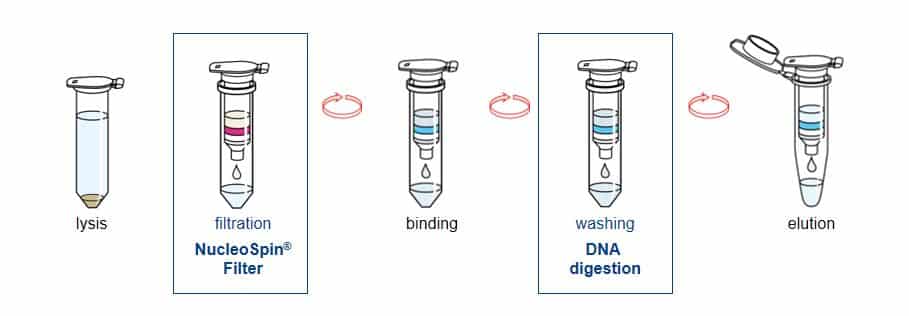
Figure 1: NucleoSpin RNA procedure.
NucleoSpin RNA Plus ─ Rapid DNA Elimination Using NucleoSpin gDNA Removal Column
The NucleoSpin RNA Plus kit is designed to purify high-quality RNA from a variety of cell and tissue types. The kit integrates an innovative feature, the NucleoSpin gDNA Removal Column, which rapidly and efficiently removes genomic DNA without the need for DNase.
- NucleoSpin gDNA Removal Column → No time-consuming DNase digestion steps
- High-quality RNA → Lysis buffer results in immediate inactivation of RNases
- Convenient handling → Lysate clearing and gDNA removal with one column in one step
- New efficient lysis buffer → No beta-mercaptoethanol or TCEP necessary
► NucleoSpin RNA Plus Workflow
One of the most important critical aspects of any RNA isolation protocol is to prevent degradation of the RNA. When using NucleoSpin RNA Plus, cells and tissues are first lysed by incubation in a chaotropic ion lysis buffer solution, which immediately inactivates RNases. The lysate is added to the NucleoSpin gDNA Removal Column (yellow ring) to clarify the lysate and remove contaminating gDNA without the need for a DNase I step (Figure 2). After the addition of the Binding Solution to the flow-through, the RNA is bound to the NucleoSpin RNA Plus Column (light blue ring). Two subsequent wash steps remove salts, metabolites, and macromolecular cellular components. High-quality RNA is eluted with RNase-free water.
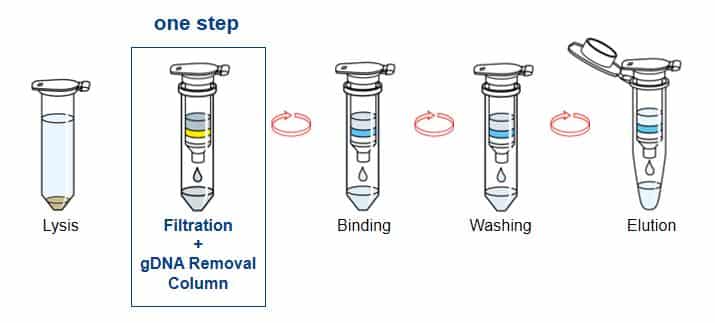
Figure 2: NucleoSpin RNA Plus procedure.
► NucleoSpin RNA Plus Achieves High Yield
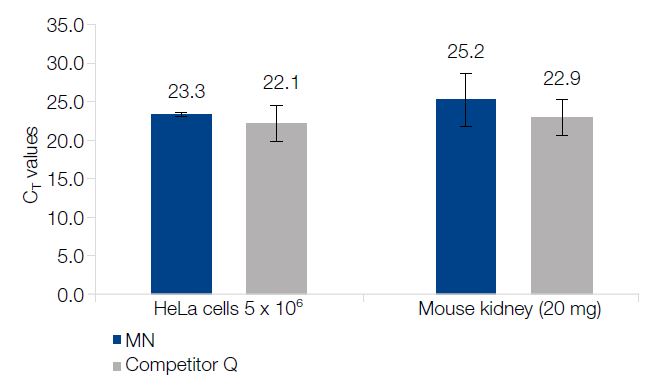
Figure 3: RNA was isolated from HeLa cells (5x106) and mouse kidney (20 mg) using the NucleoSpin RNA Plus kit (MN, blue) and a competitor's kit (Q, grey). The RNA recovery was quantified by qRT-PCR. Ct (cycle threshold) values are similar when comparing the two kits, indicating abundant target nucleic acid in the analyzed samples.
► NucleoSpin RNA Plus Ensures Efficient Genomic DNA Removal
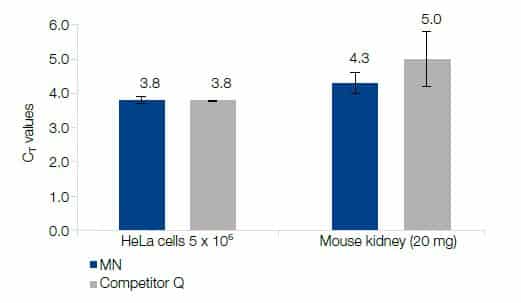
Figure 4: The NucleoSpin RNA Plus kit (MN, blue) and a competitor's kit (Q, grey) were used for the isolation of RNA from HeLa cells (5x106) and mouse kidney (20 mg). Residual genomic DNA was measured by qPCR. The MN kit shows higher CT values, indicating a more efficient removal of genomic DNA.
► NucleoSpin RNA Plus Guarantees High-Quality RNA
The RNA integrity number (RIN) provides a numerical assessment of the quality of RNA samples. It is based on a scale from 1 to 10, with 1 being the most degraded and 10 being the most intact. To compare the quality of RNA produced using the NucleoSpin RNA Plus kit (MN, blue) and a competitor's kit (Q, grey), RNA from mouse kidney tissue (10 mg) was isolated and amounts were analyzed using an Agilent Bioanalyzer to determine the RIN (Figure 5). The RIN value from RNA purified using the NucleoSpin RNA Plus kit was greater than that of the competitor's Q kit, indicating better quality RNA.
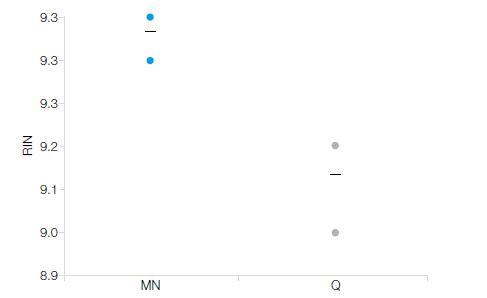
Figure 5: Comparison of the quality of RNA extracted and purified using the NucleoSpin RNA Plus kit (MN, blue) versus a competitor's kit (Q, grey). RNA from mouse kidney tissue (10 mg) was isolated and amounts were analyzed using an Agilent Bioanalyzer to determine the RIN.
Ordering Information ─ Kit Consumables by MACHEREY-NAGEL
- NucleoSpin RNA - Mini spin kit for RNA purification I REF: 740955.10/.50/.250
- NucleoSpin RNA Plus - Mini spin kit for rapid purification of RNA with DNA removal column I REF: 740984.10/.50/.250
Protocols
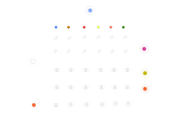
Contact info

 This is an open access protocol distributed under the terms of the Creative Commons Attribution License, which permits unrestricted use, distribution, and reproduction in any medium, provided the original author and source are credited.
This is an open access protocol distributed under the terms of the Creative Commons Attribution License, which permits unrestricted use, distribution, and reproduction in any medium, provided the original author and source are credited. 